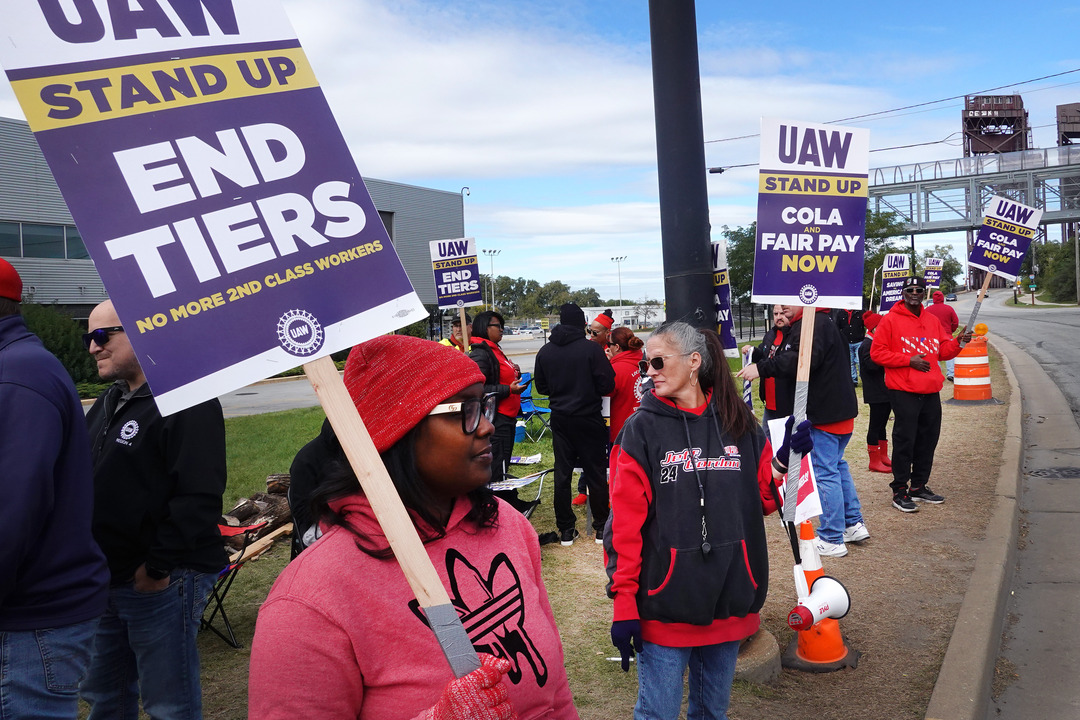President Donald Trump’s infatuation with tariffs dates back to the 1980s, when he first said tariff was “the most beautiful word in the dictionary.” On March 26, he announced “a 25 percent tariff on all cars not made in the U.S.” but exempted auto parts that comply with the US-Mexico-Canada Agreement, the successor to NAFTA.
For those parts, and for the 25 percent of US-sold vehicles that are assembled in Mexico and Canada, the tariffs will be applied partially at an undisclosed date to only the non-US part of the vehicle’s value. Essentially auto manufacturing is already so integrated across North America that the administration has left carve outs for Mexico and Canada.
The president’s approach to the auto industry offers an opportunity to clarify the goals of US trade policy. To understand what is really in the interests of working people, we have to separate the president’s political whims from the changing contours of global capitalism.
For politicians and auto executives, at stake is whether the US auto industry will be an appendage of a global market, or a North American continental market, or a national market. Their aim, as always, is the most profit possible, and they are indifferent to national boundaries.
But for the 12 million workers in US manufacturing, the question is whether it is possible, under this administration and in this moment of twenty-first-century capitalism, to create a pro-worker, pro-union trade policy.
The Trump administration’s focus on tariffs obscures the nature of this problem. Despite the accumulated traumas of waves of partial restructuring, the US auto industry has spent most of the last sixteen years growing. When jobs last peaked, in spring 2023, there were more than one million…
Auteur: Andrew Elrod

